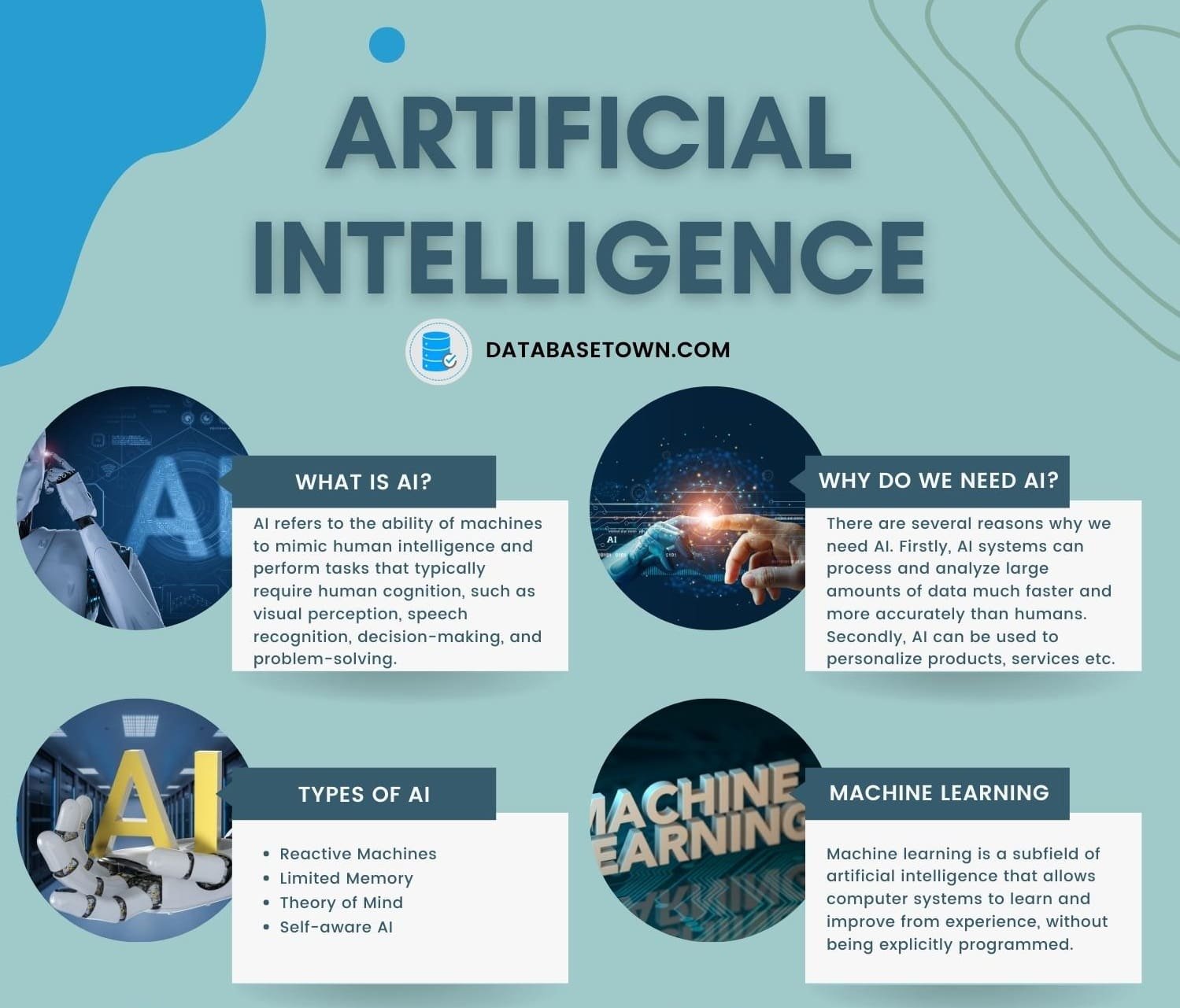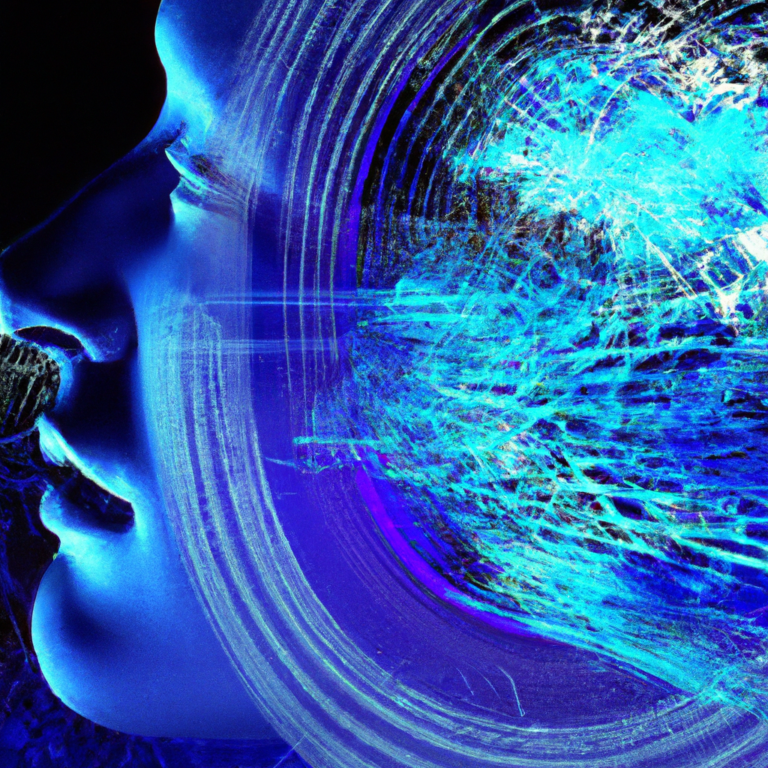AI Tutorials For Beginners

If you’ve ever been curious about artificial intelligence (AI), then these AI tutorials for beginners are the perfect place to start. From understanding the basics to exploring real-world applications, these tutorials will help demystify AI and guide you through the fascinating world of intelligent machines. Whether you’re a complete novice or have some knowledge in the field, these friendly tutorials will provide valuable insights and practical tips to help you kickstart your journey into the exciting realm of AI. Get ready to unlock the secrets behind this cutting-edge technology and embark on an educational adventure unlike any other.

This image is property of i.ytimg.com.
1. Introduction to AI
What is Artificial Intelligence?
Artificial Intelligence (AI) refers to the development of computer systems that can perform tasks that would typically require human intelligence. These tasks include learning, reasoning, problem-solving, recognizing patterns, and understanding natural language. AI aims to create intelligent machines that can think, learn, and make decisions like humans.
History of AI
The history of AI dates back to the 1950s when computer scientists first started exploring the idea of creating machines that can mimic human intelligence. The field saw significant advancements in the early years with the development of programs that could play chess and solve mathematical problems. However, progress slowed down in the 1970s due to the limitations of existing technology. The resurgence of AI came in the late 1990s with advancements in computational power, data availability, and algorithmic improvements.
Types of AI
AI can be categorized into three main types: narrow, general, and superintelligent. Narrow AI, also known as weak AI, refers to AI systems that are designed to perform specific tasks, such as voice recognition or image classification. General AI, also known as strong AI, is the concept of creating machines that possess human-like intelligence and can perform a wide range of tasks across different domains. Superintelligent AI refers to the hypothetical future AI systems that surpass human intelligence in all cognitive aspects.
2. Basics of Machine Learning
What is Machine Learning?
Machine Learning (ML) is a subset of AI that focuses on the development of algorithms and statistical models that enable computers to learn and make predictions or decisions without being explicitly programmed. ML algorithms learn from data and improve based on experience, allowing computers to automatically analyze and interpret complex patterns in large datasets.
Supervised Learning
Supervised learning is a type of ML that involves training a model on labeled data. The algorithm learns from the input-output pairs and generalizes the relationship between them to make predictions or classify new, unseen data. This approach requires the availability of a large and accurately labeled dataset for training.
Unsupervised Learning
Unsupervised learning is a type of ML that involves training a model on unlabeled data. The algorithm learns to find patterns, correlations, and structures in the data without any prior knowledge or explicit labels. Unsupervised learning is used for tasks such as clustering, dimensionality reduction, and anomaly detection.
Reinforcement Learning
Reinforcement learning is a type of ML that involves training an agent to interact with an environment and learn to make decisions by maximizing a reward signal. The agent explores the environment, takes actions, receives feedback (rewards or penalties), and learns to optimize its behavior over time. Reinforcement learning is widely used in robotics, game playing, and control systems.

This image is property of microsoft.github.io.
3. Neural Networks
Introduction to Neural Networks
Neural networks are a fundamental concept in AI and machine learning. They are computational models inspired by the structure and function of the human brain. Neural networks consist of interconnected nodes or neurons that process and transmit information. Each neuron takes inputs, applies an activation function, and produces an output that serves as input for other neurons.
Activation Functions
Activation functions are mathematical functions applied to the output of a neuron to introduce non-linearities into the network. Non-linear activation functions enable neural networks to learn complex and non-linear patterns in the data. Popular activation functions include sigmoid, tanh, ReLU (Rectified Linear Unit), and softmax.
Types of Neural Networks
There are various types of neural networks, each suited for different tasks. Feedforward neural networks are the simplest and most common type, where information flows only in one direction, from input to output. Convolutional Neural Networks (CNNs) are specialized for processing grid-like data, such as images, and are widely used in computer vision tasks. Recurrent Neural Networks (RNNs) have connections between neurons that form a directed cycle and are particularly effective for tasks involving sequential data, such as natural language processing.
Training Neural Networks
Training neural networks involves optimizing the network parameters to minimize the difference between the predicted outputs and the true outputs. This is done through an iterative process called backpropagation, where the errors are propagated backward through the network, adjusting the weights and biases of the neurons. Training neural networks requires a large labeled dataset, a suitable loss function, and an optimization algorithm such as stochastic gradient descent.
4. Deep Learning
Understanding Deep Learning
Deep learning is a subfield of machine learning that focuses on training deep neural networks with multiple layers or hidden units. Deep neural networks are capable of automatically learning hierarchical representations of data, allowing them to extract high-level features and patterns. Deep learning has revolutionized several fields, including computer vision, natural language processing, and speech recognition.
Deep Learning Frameworks
To facilitate the development and implementation of deep learning models, several frameworks have been developed, such as TensorFlow, PyTorch, and Keras. These frameworks provide high-level libraries and interfaces that enable researchers and developers to build and train complex deep learning models efficiently.
Convolutional Neural Networks (CNN)
Convolutional Neural Networks (CNNs) are a type of deep neural network specifically designed for processing grid-like data, such as images. CNNs are characterized by their ability to automatically learn spatial hierarchies of features through a combination of convolutional layers, pooling layers, and fully connected layers. CNNs have achieved remarkable success in image classification, object detection, and image segmentation tasks.
Recurrent Neural Networks (RNN)
Recurrent Neural Networks (RNNs) are a type of deep neural network that has connections between neurons that form a directed cycle. RNNs are particularly effective for tasks involving sequential data, such as natural language processing and speech recognition. The recurrent connections in RNNs allow them to capture dependencies and temporal relationships in the data.

This image is property of i.ytimg.com.
5. Natural Language Processing (NLP)
What is NLP?
Natural Language Processing (NLP) is a subfield of AI that focuses on the interaction between computers and human language. NLP involves tasks such as language translation, sentiment analysis, text classification, and speech recognition. NLP techniques enable computers to understand, interpret, and generate human language in a meaningful way.
Preprocessing Text Data
Preprocessing text data is a crucial step in NLP tasks. It involves cleaning and transforming raw text data into a format suitable for analysis. Common preprocessing techniques include tokenization, which splits text into individual words or tokens, removing stopwords or irrelevant words, and applying stemming or lemmatization to reduce words to their base forms.
Text Classification
Text classification is the task of assigning predefined categories or labels to pieces of text. It finds applications in document categorization, sentiment analysis, spam detection, and topic modeling. Text classification algorithms use machine learning techniques, such as Naive Bayes, decision trees, and deep learning models, to learn patterns and relationships in the text data and make accurate predictions.
Text Generation
Text generation involves the automatic generation of human-like text by AI models. This task finds applications in chatbots, language modeling, and content generation. Text generation models, such as recurrent neural networks (RNNs) with long short-term memory (LSTM), use training data to learn the statistical properties of the text and generate coherent and contextually relevant text sequences.
6. Computer Vision
Introduction to Computer Vision
Computer vision is a subfield of AI that focuses on enabling computers to gain high-level understanding from visual data, such as images and videos. Computer vision involves tasks such as image classification, object detection, image segmentation, and facial recognition. It finds applications in fields like autonomous vehicles, surveillance, and medical imaging.
Image Classification
Image classification is the task of labeling or categorizing an image into predefined classes or categories. It involves training a machine learning or deep learning model to recognize and differentiate objects, scenes, or patterns in images. Image classification algorithms use features extracted from images and learn to classify new images based on these extracted features.
Object Detection
Object detection is the task of identifying and locating objects of interest within an image or a video. It involves detecting the presence of objects and drawing bounding boxes around them. Object detection algorithms use techniques such as region-based convolutional neural networks (R-CNN), You Only Look Once (YOLO), and Single Shot MultiBox Detector (SSD) to perform accurate and real-time object detection.
Face Recognition
Face recognition is the task of automatically identifying or verifying a person’s identity based on their facial features. It involves analysis and comparison of facial data to a database of known faces. Face recognition algorithms use deep learning models, such as convolutional neural networks (CNNs), to extract facial features and perform accurate face matching.

This image is property of i.ytimg.com.
7. Reinforcement Learning
Introduction to Reinforcement Learning
Reinforcement learning is a branch of AI that focuses on training agents to make sequential decisions in an environment to maximize a reward signal. It involves an agent that interacts with an environment, takes actions, receives rewards or penalties, and learns to optimize its behavior over time. Reinforcement learning has been successfully applied to tasks such as game playing, robotics, and autonomous control systems.
Markov Decision Process
Markov Decision Process (MDP) is a mathematical framework used to model sequential decision-making problems in reinforcement learning. It involves a set of states, actions, transition probabilities, and rewards. The dynamics of the environment are modeled as a Markov chain, and the agent learns a policy that maximizes the expected long-term reward.
Q-Learning Algorithm
Q-Learning is a popular algorithm in reinforcement learning used to learn the optimal action-selection policy for an agent in an MDP. It involves estimating the value of each state-action pair, known as the Q-value, and updating these values based on the rewards received. Q-Learning follows an iterative process of exploration and exploitation to converge to the optimal Q-values.
Deep Q-Learning
Deep Q-Learning is an extension of Q-Learning that leverages deep neural networks to approximate the Q-values for large state-action spaces. It involves using a deep neural network, known as a Q-network, to estimate the Q-values, and training the network to minimize the difference between the predicted Q-values and the target Q-values. Deep Q-Learning has achieved significant success in playing games, such as Atari games, and controlling complex systems.
8. AI in Healthcare
Applications of AI in Healthcare
AI has immense potential to revolutionize healthcare. It can enhance medical diagnosis, optimize treatment plans, improve patient monitoring, and enable personalized medicine. AI has been applied to various healthcare domains, including radiology, pathology, genomics, drug discovery, and patient data analysis.
AI-based Diagnosis
AI-based diagnosis systems use machine learning and deep learning algorithms to analyze medical images, such as X-rays, MRI scans, and mammograms, for early detection and diagnosis of diseases. These systems can assist radiologists in detecting abnormalities, identifying patterns, and providing more accurate and timely diagnoses.
Drug Discovery
AI is transforming the drug discovery process by accelerating the identification and development of potential therapeutics. Machine learning models can analyze large databases of chemical compounds, identify molecules with desired properties, and predict their effectiveness and safety. AI also aids in virtual screening, molecular docking, and drug repurposing.
Healthcare Robotics
AI-powered robots are increasingly being used in healthcare settings to assist with various tasks. These robots can perform repetitive tasks, such as medication delivery, patient monitoring, and logistics management. They can also provide companionship and emotional support to patients, particularly the elderly and those with chronic conditions.

This image is property of databasetown.com.
9. AI Ethics and Bias
Ethical Considerations in AI
As AI becomes increasingly integrated into society, ethical considerations become crucial. AI raises concerns about privacy, security, job displacement, and biases. Ethical AI development involves ensuring transparency, fairness, accountability, and human-centered design. It also requires adherence to legal and societal norms and continuous monitoring and evaluation.
Bias in AI Systems
AI systems can exhibit biases due to biased training data or biased algorithms. Biases can result in unfair treatment, discrimination, and perpetuation of societal inequalities. Bias mitigation techniques, such as dataset augmentation, algorithmic fairness, and diverse data collection, are important in minimizing biases and ensuring AI systems serve all users equally.
Fairness in AI
Fairness in AI refers to the absence of unfair biases or discrimination in the outcomes produced by AI systems. It involves ensuring equal treatment and opportunities for all individuals, irrespective of their race, gender, age, or other protected attributes. Fairness in AI can be achieved through transparent and unbiased design, regular audits, and inclusive stakeholder involvement.
Transparency and Accountability
Transparency and accountability are essential in AI systems to foster trust, understanding, and responsible use. AI systems should be explainable, providing clear reasons for their decisions and actions. Organizations and developers should also be accountable for the ethical and legal implications of AI systems, ensuring they adhere to established standards and guidelines.
10. AI in Everyday Life
AI in Virtual Assistants
Virtual assistants, such as Siri, Alexa, and Google Assistant, have become an integral part of our daily lives. These AI-powered assistants can perform tasks like setting reminders, answering questions, providing recommendations, and controlling smart devices. They use natural language processing, machine learning, and voice recognition to understand and respond to user commands.
AI in Recommendation Systems
Recommendation systems are AI-based algorithms used to personalize and suggest relevant products, services, and content to users. These systems are used in e-commerce platforms, streaming services, social media, and search engines. Recommendation systems analyze user behavior, preferences, and historical data to generate personalized recommendations and enhance user experience.
AI in Autonomous Vehicles
Autonomous vehicles, or self-driving cars, are a prime example of AI in everyday life. AI algorithms, including computer vision, sensor fusion, and reinforcement learning, enable vehicles to perceive the environment, make decisions, and navigate autonomously. Autonomous vehicles have the potential to improve road safety, reduce traffic congestion, and revolutionize transportation.
AI in Social Media
AI plays a significant role in social media platforms, facilitating content moderation, personalized recommendations, and sentiment analysis. AI algorithms analyze user behavior, interactions, and content to determine relevance, filter out inappropriate or harmful content, and deliver tailored content to users. AI also aids in detecting fake news, preventing cyberbullying, and improving user engagement.






